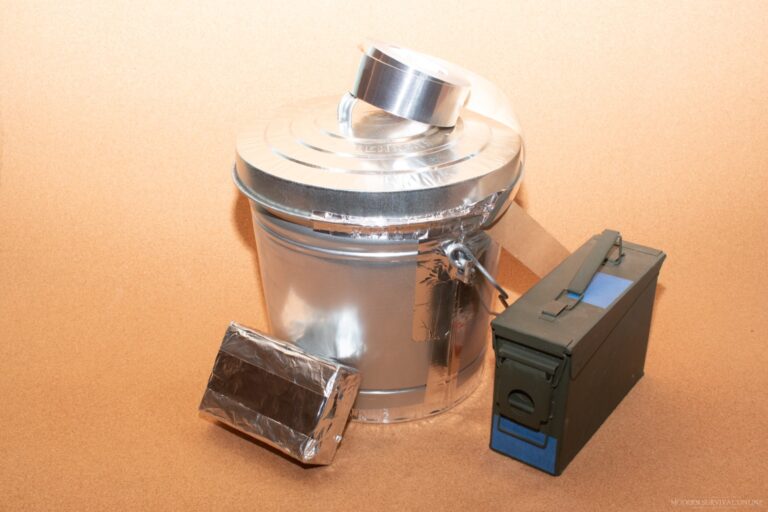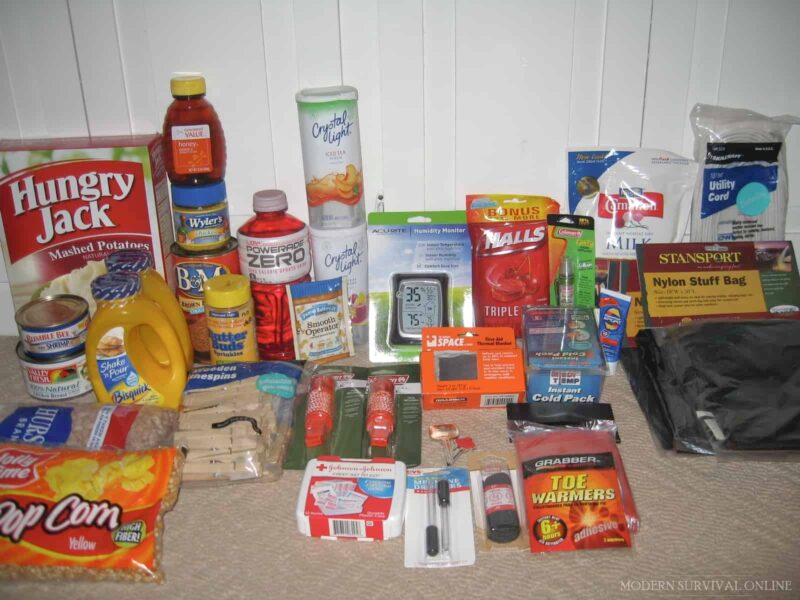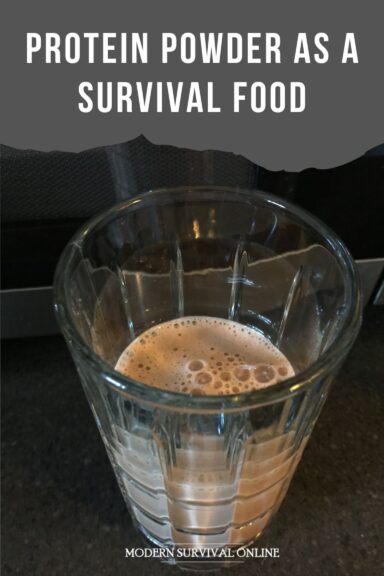Preparing for an EMP is, arguably, one of the most pressing and difficult tasks that a prepper has to undertake. Among the so-called mega disasters, an EMP is frighteningly one of the most likely to occur, and one that can instantly upend society by disabling, damaging, or utterly destroying our power grid and electronics, or anything that relies on electronic components.

Some people assert that merely unplugging electronics, or turning them off, is enough to save them though. Is it true? Will unplugged or off devices survive an EMP?
Maybe. Unplugging any electrical device from the power grid will go a long way to saving it from a devastating power surge, but EMPs can directly impart damaging or destructive currents to any conductive material whether it is unplugged or turned off.
Unfortunately, there is no straightforward and simple answer as to whether or not unplugging any device is going to be enough to save it from a big EMP.
It certainly won’t hurt, and indeed will likely improve the chances that your gear will survive, but it is no guarantee for reasons we will learn. Keep reading and I’ll tell you about risk factors and countermeasures for EMP preparation...
EMPs by Nature Induce Currents into Any Conductive Material
I know it’s disappointing to hear that merely unplugging or powering down your electronics isn’t enough to save them from an EMP, not for sure, but there is an important lesson in this.
Understand that EMPs can potentiall damage any unprotected or unshielded technology. Any kind of material that is conductive, be it copper or something else, can serve as an “antenna” for an EMP’s effects. Basically, EMPs are invisible waves of electrical, magnetic, or electromagnetic energy. It’s all in the name, after all!
That means that your unplugged computer could suddenly be bombarded with dangerous surges of electricity that could fry it, and the same goes for any other vulnerable device.
Now, things will certainly be a lot worse if it is plugged in at the time, that I can promise you, but unplugging it is only half the battle.
Anything Plugged into the Grid is in Serious Danger During an EMP
One thing we need to make totally clear: turning off a device is not enough to keep it safe if it is still connected to a power grid, wherever that power comes from. All connected devices and appliances are in serious danger of being totally fried during a powerful EMP event.
That’s because EMPs will energize an entire electrical grid in the area of effect, leading to a cascading, dangerous level of voltage that’s more than capable of causing severe damage or total destruction to anything currently connected to the grid in any way.
For sensitive components like batteries, chargers, computers, home electronics, radios, and the like, this is usually game over.
In fact, substantial EMPs, like the infamous Carrington Event, can cause such significant overloading that it can result in a shower of sparks and fires! It doesn’t take much imagination to see how home appliances and other electronics might literally go up in flames during such an instance.
The bottom line is that anything plugged in at the time the EMP occurs is almost certainly going to be toast unless it is protected by special, heavy-duty surge protector equipment or is built in such a way that it can handle substantial overload.
Even then, we just can’t be sure because we haven’t lived through a massive EMP in well over a hundred years!
Take Radios, Phones, and Tools Off of Chargers for Safety
All this is probably pretty worrying, right? For us preppers, we depend on all sorts of electronics to stay ready for tough times, and now, the tough times might, in fact, wipe out our electronics especially!
Don’t panic, because like everything else, there’s always something you can do to improve your chances.
For things like cell phones, walkie-talkies, radios, power tools, flashlights, headlamps, and anything else you are depending on that might be plugged into the wall, simply keep it off of the charger or unplugged as much as you can.
Simply, whatever it is, it will have a much higher chance of surviving an EMP with moderate or even no damage if it isn’t subjected to that devastating initial surge of power.
Anything with a Microchip or Transistor is Still Vulnerable When Unplugged
You must be particularly cautious to protect or harden any devices that depend on a circuit board, microchip, or transistors to function.
Basically, the thinner and finer, and more densely packed, the integrated circuits and conductive pathways are in these devices, the more prone they are to EMP-induced damage.
Obviously, our thoughts go to our PCs, laptops, gaming systems, TVs, and things like that, but increasingly more and more modern technology is completely dependent on such components for even basic function.
Things like modern, high-output flashlights might have tiny circuit boards to control power and maximize battery life.
Older electronics are less prone to this type of damage when unplugged, but only to a degree. I’ll tell you more about protecting these especially sensitive devices in the next sections.
Distance, Obstructions, and Intensity Make a Difference
Something else to keep in mind is that there’s no flat standard for intensity when it comes to major EMP events.
We really don’t have any publicly available data when it comes to the intensity of these things, as all the testing that has been conducted by the government and private interests is being kept secret for the moment. Obviously, count on it being nothing good…
But anyway, your electronics might survive just fine if the EMP happens very far away and there are many obstacles between you and the origin that can disrupt or attenuate the pulse. They do dissipate over time and distance!
Likewise, if you are underground, shielded by mountains, dense forest, or even tall buildings, that might do a lot to stop your electronics from getting fried, but obviously the issue of conduction through the electrical grid will still be a persistent problem even some distance away from the point of origin.
In short, there is a chance you might escape unscathed if conditions are favorable to you when the event takes place.
How Can You Protect Vulnerable Electronics?
Protecting anything, no matter what it is, from an EMP is a matter of just two things: shielding and Faraday cages.
EMP shielding is nothing more than an extra layer of conductive material placed around the vital components of electronics.
Typically, this is done by the manufacturer but, if you are crafty, it is possible to harden your own electronics through various means – though this isn’t going to be practical for most of us.
A better option is to use a Faraday cage. For anything that’s not connected to the power grid, enclosing it in a container of conductive material on all sides, usually in the form of fine metal mesh or foil, will block the destructive energy of the EMP from reaching the vulnerable components.
Depending on the size of the item in question, a Faraday cage can take the form of a box, bag, or can or a larger enclosure for equipment like generators and even vehicles.
The good news is that these cages are fundamentally quite simple, and you can make your own with just a little bit of DIY skill, though purpose-designed units are available if you don’t have the time and are willing to pay.
Stashing your prepper equipment inside an appropriate Faraday cage is the very best way to ensure it will be functional when you need it in the aftermath of a powerful EMP.
The post Can Devices That Are Unplugged or Off Survive EMPs? appeared first on Modern Survival Online.
via Modern Survival Online https://ift.tt/c7K5Btj

